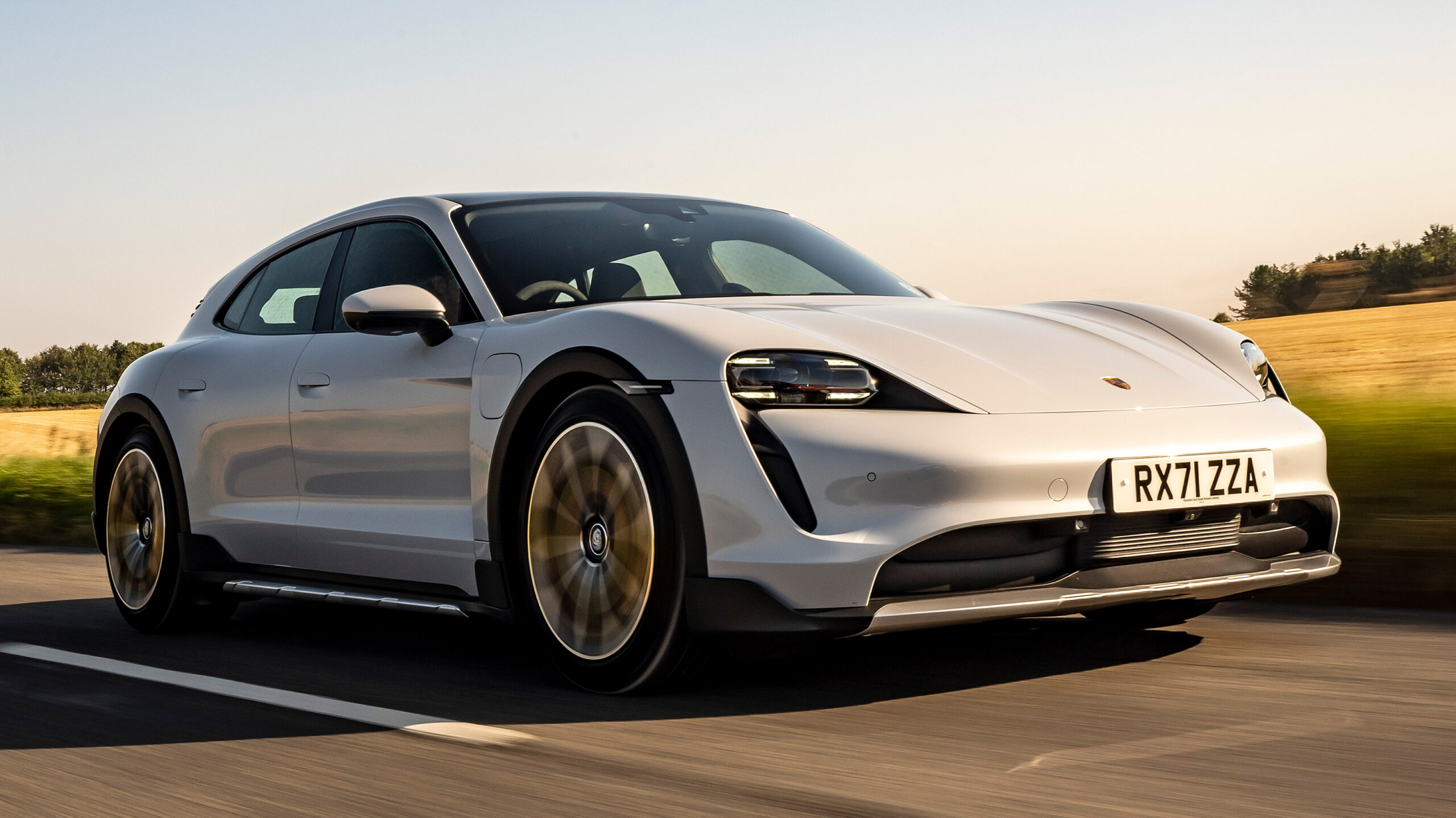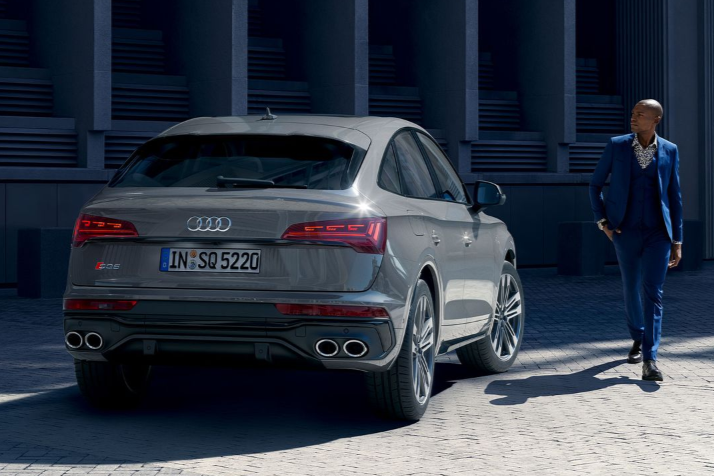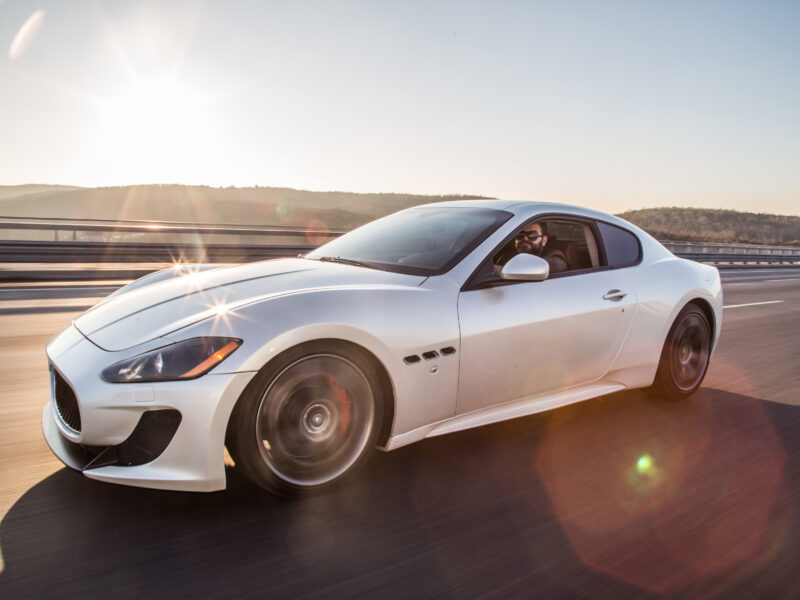The all-electric 2022 Porsche Taycan sedan delivers thrilling acceleration and engaging handling courtesy of Porsche’s clever engineering. I recently had a chance to test drive the new Taycan and today I’ve jotted down my opinion on the driving and handling experience.
What is the Porsche Taycan like to drive?
As I sat in the Taycan and hit the pedal, I soon felt that the brand’s first EV offers all the spark and charisma of other sports cars from Porsche. Before I reveal what it’s like to drive the new Taycan, you should know that the German automaker offers the Taycan sedan in various trim levels with different powertrain setups. Here’s a table that shows all the important specs of the sedan model.
| Trim Level | Battery (Standard/Optional) | Drivetrain | Power Output | Drive Range |
| Base | 79-kWh lithium-ion battery/ 93-kWh lithium-ion battery | Single motor, rear-wheel-drive | 236 kW (321 hp) and up to 344 Nm (254 lb-ft) or 275 kW (375 hp) and up to 356 Nm (263 lb-ft) | 362 / 453 km (225 /282 miles) |
| 4S | 79-kWh lithium-ion battery/ 93-kWh lithium-ion battery | Two motors, all-wheel-drive | 315kW (429 hp) and up to 640 Nm (472 lb-ft) or 354 kW (482 hp) and up to 650 Nm (479 lb-ft) | 365 /437 km (227/272 miles) |
| GTS | 93-kWh lithium-ion battery | All-wheel-drive | 374 kW (509 hp) and up to 499 Nm (368 lb-ft) or 355 kW (482 hp) and 649 Nm (479 lb-ft) | Est. 385 km (240 miles) |
| Turbo | 93-kWh battery | Two motors, all-wheel-drive | 453 kW (616 hp) and up to 848Nm (626 lb-ft) | 340/440 km (212/275 miles) |
| Turbo S | 93-kWh battery | Two motors, all-wheel-drive | 453 kW (616 hp) and up to 1050 Nm (774 lb-ft) | 320/450 km (201/278 miles) |
All the power figures above are without the over-boost. With launch control, all Taycans offer a short burst of additional power.
Now coming back to the Taycan drive, we all know that to make an EV agile and increase its drive range, it has to deal with the hefty weight owing to heavy batteries. Porsche also had the same challenge, and the car weighs a lot more than the Panamera.
However, the automaker did well by positioning most of the weight low down in the car between the two axles. It is the reason the Taycan has a centre of gravity some supercars cannot match. The lower centre of gravity allowed me to corner hard with the car remaining balanced. Besides the mechanical grip, Porsche’s Active Suspension Management provides optimal shock absorption, working together with the independent suspension setup.
Without a doubt, the grip, balance and resistance to body roll were remarkable – better than any other EV I’ve driven in the segment, excluding the Audi E-Tron GT. The Taycan model I drove had the optional active anti-roll bars, making the cornering as efficient as I experienced in the lighter Panamera.
While negotiating rougher surfaces at high speed, I did notice some tyre noise, thanks to the bigger alloy wheels. However, the regular 19-inch wheels available on the base Taycan and the 4S variant produce negligible noise. The wind noise is not an issue at all in any of the Taycan models.

How well does the Taycan handle?
The steering response was terrific as I sensed a better connection to the road than I had in the Model S. The steering is extremely accurate to the point that me moving the steering wheel a fraction gave an equally delicate but positive response. With the rear-wheel steering, I felt this big car cornered like a small vehicle.
I played around with the suspension settings throughout the drive. Overall, the ride was not as smooth as the E-Tron GT, but it was more controlled. The car responds to bumps and ruts far better than the Model S, which, despite having fantastic handling, feels slightly less settled on the road than the Taycan.
Porsche’s brake pedal is well engineered. Normally, brake pedals in EVs are grabby due to regenerative braking (this mechanism charges the battery when we slow down the vehicle). However, the German engineers integrated the pedal very well in the Taycan. I was able to stop the vehicle easily, though the brake pedal does not give the natural feel of petrol-powered Porches.
What impressed me the most was the EV’s acceleration. The entry-level Taycan, with a single motor, rear-wheel-drive layout, and up to 236 kW (321 hp) or 295 kW (402 hp) / 344 Nm (254 lb-ft) with launch control – can hit 60 mph (96.5 km/h) from a standstill position in 5.1 seconds. However, for an authentic Porsche acceleration experience, I suggest opting for the dual-motor 4S with Performance Battery Plus. With a continuous 332 kW (452 hp) or 413 kW (562 hp) (performance battery numbers) on tap, you can do the 0-60 mph dash in only 3.8 seconds. Now that’s a Porsche EV worth driving!
I felt like the 4S was even faster than the numbers suggest, especially when I compared it with the BMW M55i, which does 0-60 in 3.6 seconds. It is absurd to reason that the 4S is just at the second spot in the Taycan lineup. The top-of-the-line Turbo S blurs the line between sedan and supercar with a 0 to 60 run completed in just 2.6 seconds. Need I say more?



